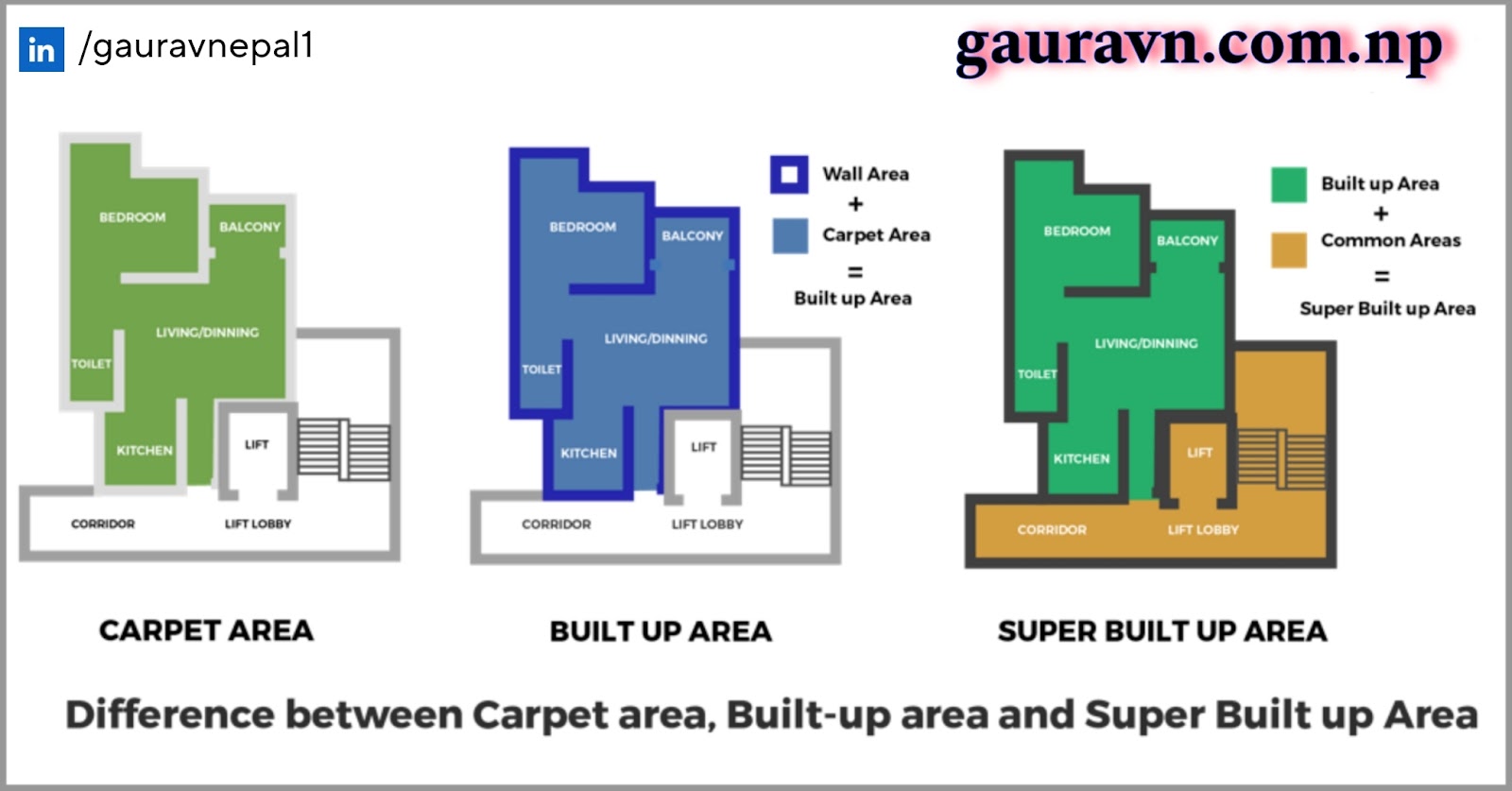Understanding Carpet Area, Built-up Area, and Super Built-up Area in Real Estate
When purchasing property, especially in the real estate market, you may encounter various terms related to the measurement of areas in a building or apartment. Understanding the differences between Carpet Area, Built-up Area, and Super Built-up Area can help you make informed decisions. In this blog, we’ll explain each of these terms in detail.
1. Carpet Area
Definition: Carpet area refers to the actual usable area within the walls of an apartment where you can lay a carpet. This area excludes the thickness of the walls, balconies, and other non-livable spaces. Essentially, it's the net usable floor space inside the house.
Components Included:
Bedrooms
Living/dining room
Kitchen
Bathrooms
Utility rooms (if applicable)
Components Excluded:
Thickness of internal and external walls
Balcony
Common areas like staircases and lobbies
Importance: Carpet area is the actual usable area for a homebuyer. When evaluating space, knowing the carpet area helps in understanding how much of the purchased area can truly be used for living purposes.
---
2. Built-up Area
Definition: Built-up area includes the carpet area plus the thickness of the walls and other unusable areas such as balconies. This is the area that occupies the space within the outer walls of the apartment.
Components Included:
Carpet Area
Internal and external wall thickness
Balcony (if any)
Importance: Built-up area gives a more realistic understanding of the space occupied by the property. For instance, a property with thick walls may have a higher built-up area but might offer less usable space (carpet area).
Formula:
Built-up Area = Carpet Area + Wall Thickness + Balcony
---
3. Super Built-up Area
Definition: Super Built-up area includes the built-up area plus a proportionate share of common areas such as the lobby, staircase, lift, and corridors. In many real estate transactions, especially in apartments or high-rise buildings, the super built-up area is often referred to as the “saleable area”.
Components Included:
Built-up Area
Proportionate share of common areas like:
Corridors
Staircases
Lift lobby
Clubhouse, gym, or any other amenities (if any)
Importance: Super built-up area is what is typically used to calculate the price of the apartment. However, buyers should be aware that the actual usable space (carpet area) might be much less than the super built-up area. For instance, if a developer mentions a super built-up area of 1,500 sq. ft., the actual carpet area could be significantly lower (e.g., around 1,000 sq. ft.).
Formula:
Super Built-up Area = Built-up Area + Common Area (proportionate)
---
Why These Terms Matter in Real Estate Transactions
Understanding these terms is crucial for anyone involved in property transactions because they directly impact the livable space and the cost per square foot. Developers often price apartments based on the super built-up area, but it’s the carpet area that determines how much actual usable space you are getting. Therefore, when purchasing or renting, always ask for the carpet area to make sure you understand the actual usable space.
Conclusion
Whether you're buying your dream home or investing in a property, knowing the difference between carpet area, built-up area, and super built-up area is essential for making informed decisions. Always ask for a clear breakdown of these areas to avoid confusion and ensure you're getting the best value for your money.






No comments:
Post a Comment